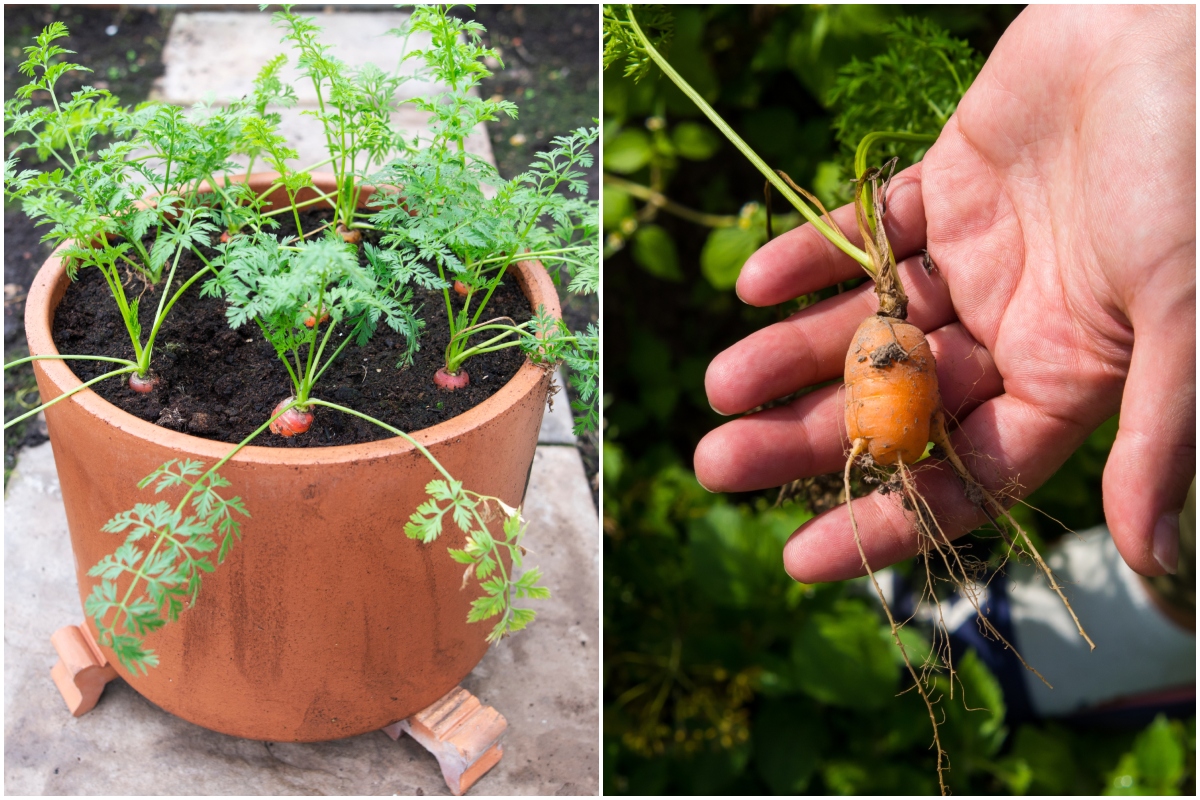
I’m quite fortunate as a gardener. My partner and I have a large no-dig garden out at his place.
But my apartment is on the second floor of my building. Gardening at home is limited to the balcony. So, I understand your frustration with the piddly yields you get from container gardening.
But I’ve taken a good, hard look at why container gardens fail to produce well and made some changes based on seeing others’ results. Now, my container garden cranks out produce. I’ll walk you through what I changed, and I’ll bet you’ll see consistently larger yields too.
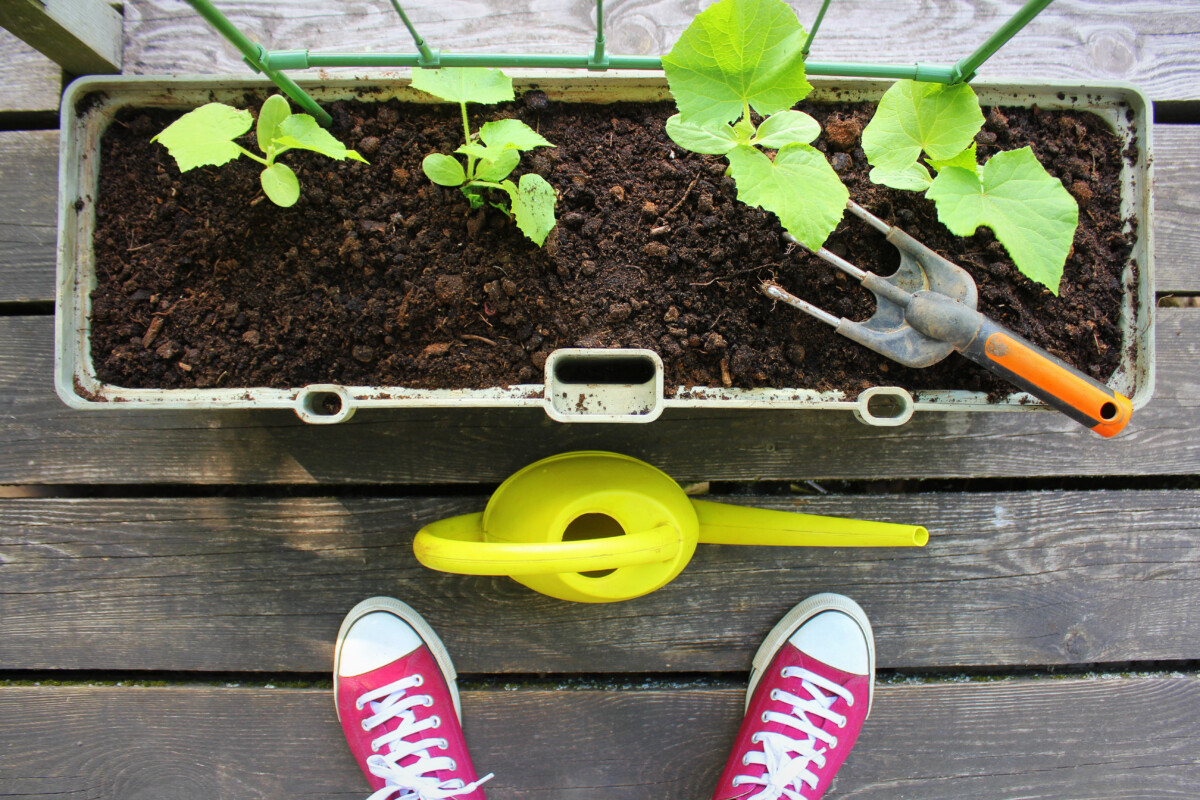
Fish Aquariums & Container Gardening
If you want to understand why getting a decent yield out of that potted tomato is difficult, speak to an aquarium enthusiast. No, I’m not joking. These fish tank diehards have it figured out, and once you see the parallels, it makes perfect sense and translates easily to container gardening.
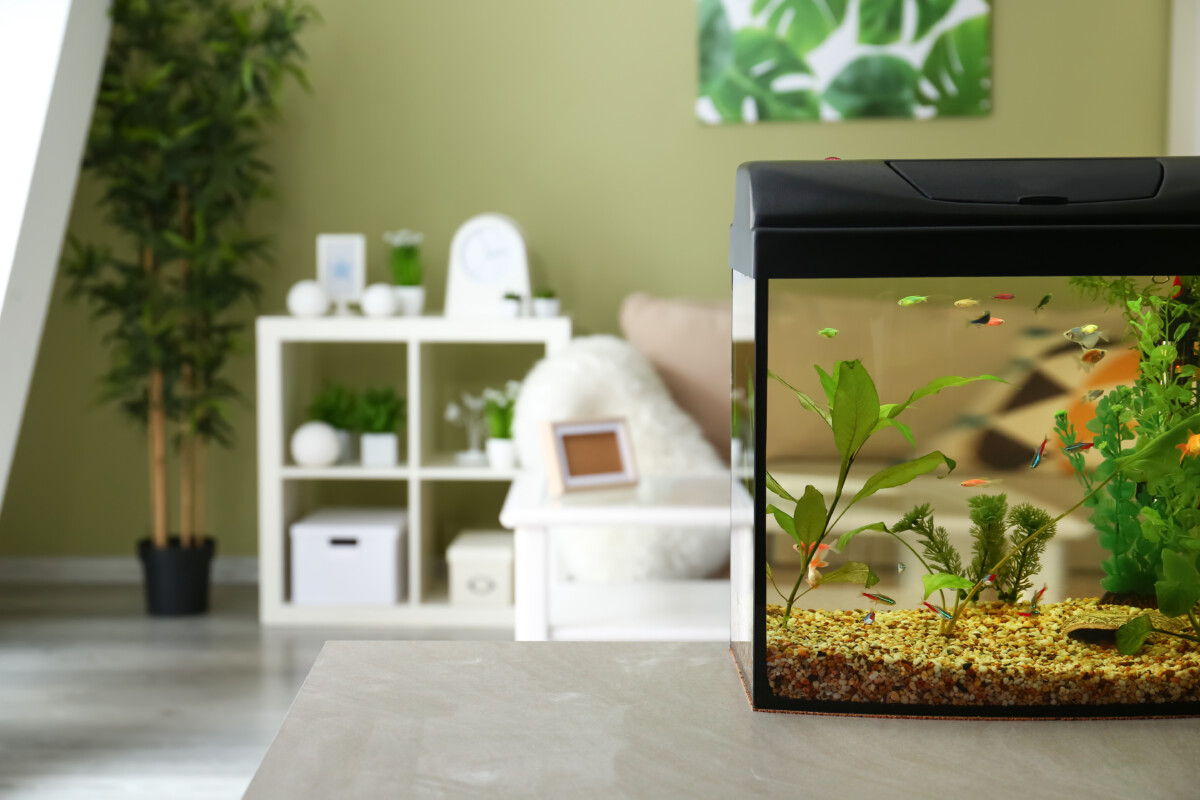
Ask anyone with experience setting up aquariums, and they will tell you the smaller the aquarium, the harder it is to maintain. If you’re a beginner to this hobby seeking advice, you’ll usually be warned away from the popular one or two-gallon setups sold in big box stores. Instead, new fish owners are encouraged toward 10- to 20-gallon tanks as they’re much more forgiving.
The reason? You’re creating a miniature habitat within a closed system.
Everything in the system must be in balance for the fish to thrive. Everything has to be within parameters, from ammonia levels to pH to nitrates and nitrites, or you end up with what’s known as “new tank syndrome” and a lot of dead fish. These naturally occurring chemicals build up quicker in a smaller setup than in a larger aquarium where the sheer volume of water dilutes them.
When maintaining balance in a small closed system, you must be more diligent and specific in its care than in a larger, more flexible setup.
The water needs to be monitored and changed more frequently; waste must be removed more often; algae blooms can get out of hand much quicker.
In this way, your container garden is a small aquarium setup, and all it takes is a few days without water, improper fertilization or stunted roots for us to end up growing a pot of dead fish.
Why Ground-Planted Crops Always Have the Advantage
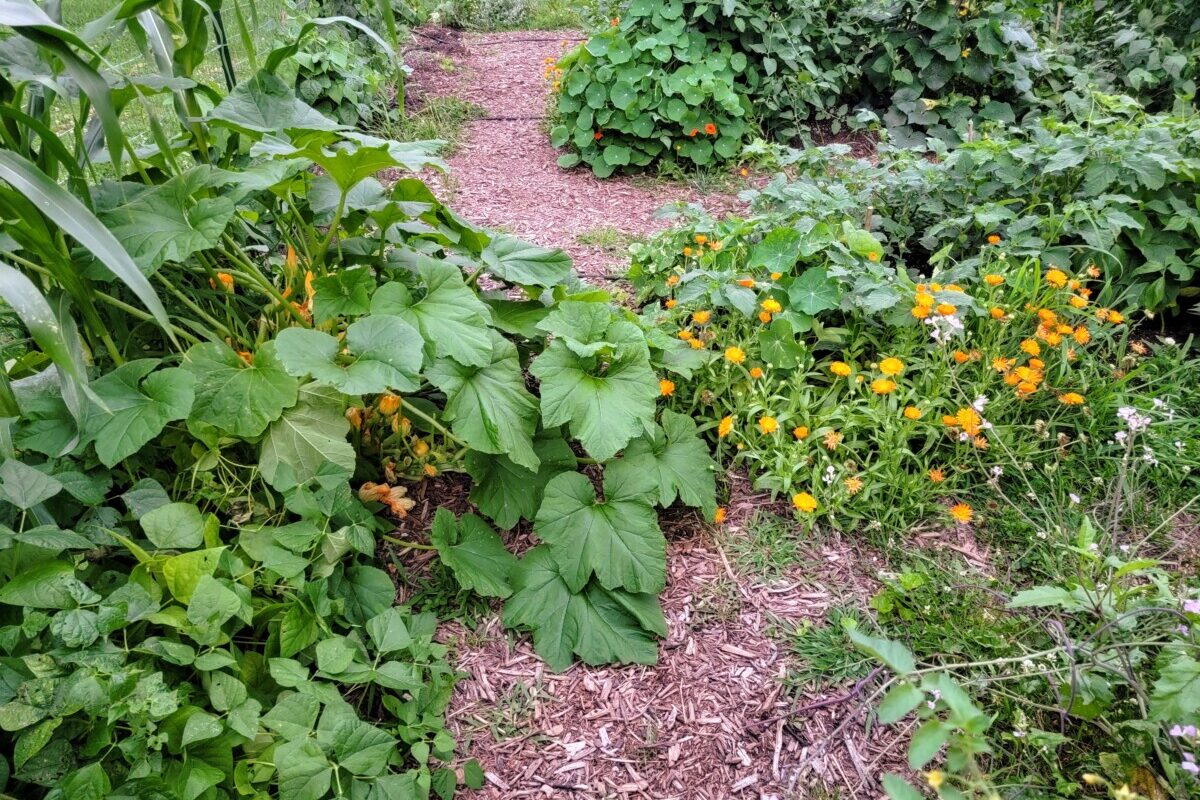
The opposite of this analogy is your garden, which is more like a pond than a fish tank. Its sheer size and access to resources in the ground means it’s easier to care for and more forgiving. In the end, you get healthier, more drought and disease-resistant plants that produce larger yields.
When you plant crops directly in the ground, they aren’t limited to what they can access via their roots, nor dependent on you for everything. Drought conditions? No problem, we’ll send our roots deeper into the earth, where more water is stored. Not enough nutrients? That’s okay; we’ll pair up with microscopic fungi in the soil to increase our root surface area and nutrient consumption.
There Is Hope, But You’re Going to Have to Trust Me
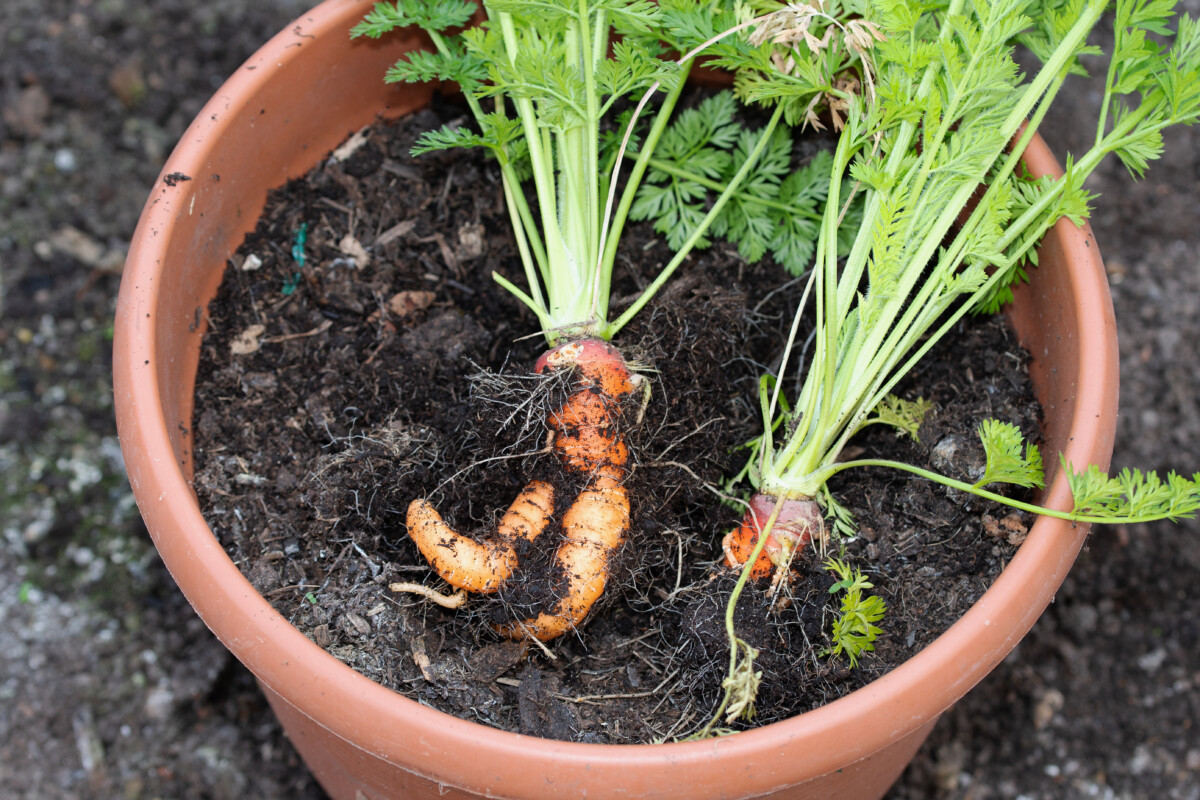
By now, you’re beginning to understand why getting more produce out of container-grown plants is difficult. Smaller containers = less room for mistakes. But don’t lose hope; creating a thriving closed system in your container garden is not hard.
To get consistently healthy potted plants and large yields, you have to go against conventional gardening wisdom, except for that bit about full sun. That’s the one thing I didn’t change. Making sure container gardens get enough direct sun goes without saying.
To an experienced gardener, some of these suggestions will feel counterintuitive, but you will have to trust me; they work. If you still don’t believe me, I’ve got some convincing evidence that it does.
Ready? Great. Let’s start making changes.
It All Starts With Your Pot
Remember that bit about small aquariums? Too often, when we pick a pot for whatever we’re growing, we choose a small aquarium. We’re especially guilty of this when trying to find a nice clay pot that will look good on the patio. Those big ones are expensive! The most important consideration is pot size if you want to grow vegetables successfully in containers.
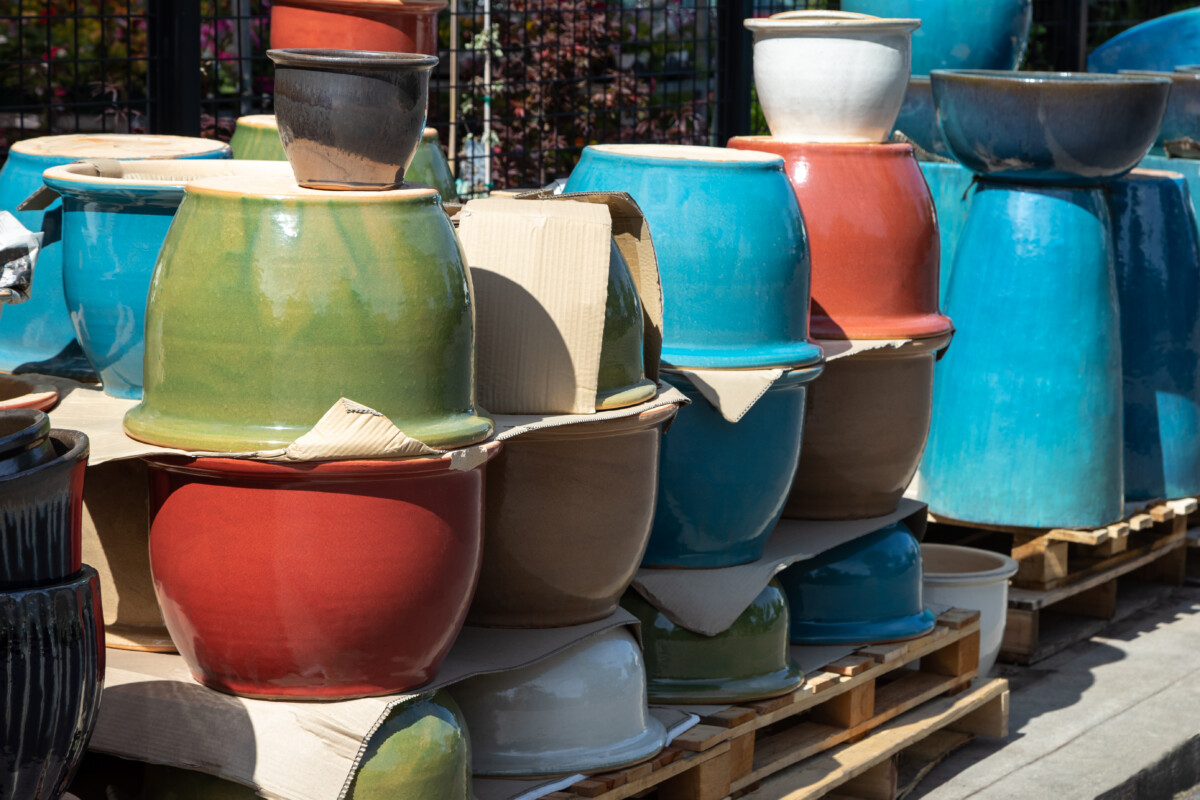
And I can guarantee you should go bigger than you think you need to.
Give your plant plenty of room to develop a large, strong root system. When growing in a smaller pot, you’re limiting this development. And if the pot becomes root bound (which happens all too often with container-grown veggies), then the root system isn’t as efficient at retaining water or absorbing nutrients.
When choosing a pot, consider the mature size of the plant. You can find this information on the seed packet, or if you bought seedlings from a nursery, look it up online. Keep this mature size in mind when choosing your pot, as the plant will only grow as large as the root system can support.
While it’s often unrealistic to try and match your pot size with the mature size of what’s growing above ground, get as close as you feasibly can. I wouldn’t go any smaller than half that size. For instance, say the eggplant you want to grow has a mature size of around 24” high. Don’t choose a pot smaller in diameter than 12” and no shallower than 12”. Go bigger if you can.
Choosing a pot that’s deep as well as wide is equally important; the deeper, the better. What you’re going for is wiggle room in your closed system, and soil volume helps that.
Stop Potting Up
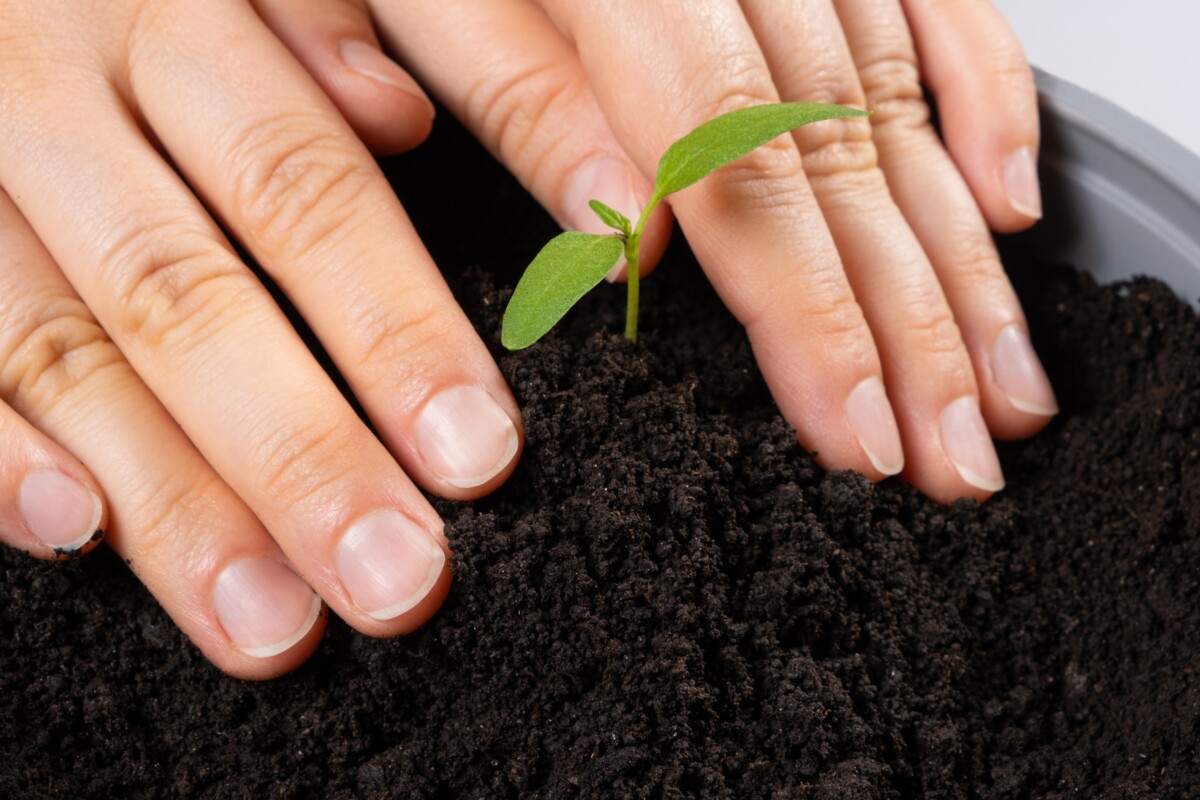
Put transplants, or when able, direct sow seeds right in the container you intend the plant to grow in. This puts the focus on strong, well-developed roots first. Yes, it means all the growth is happening in the soil initially. It may not be as exciting as watching the leaves and stems develop quicker by potting up in succession to larger pots. But your plant will catch up and be stronger in the long run.
Give Your Containers Continuous Access to Water
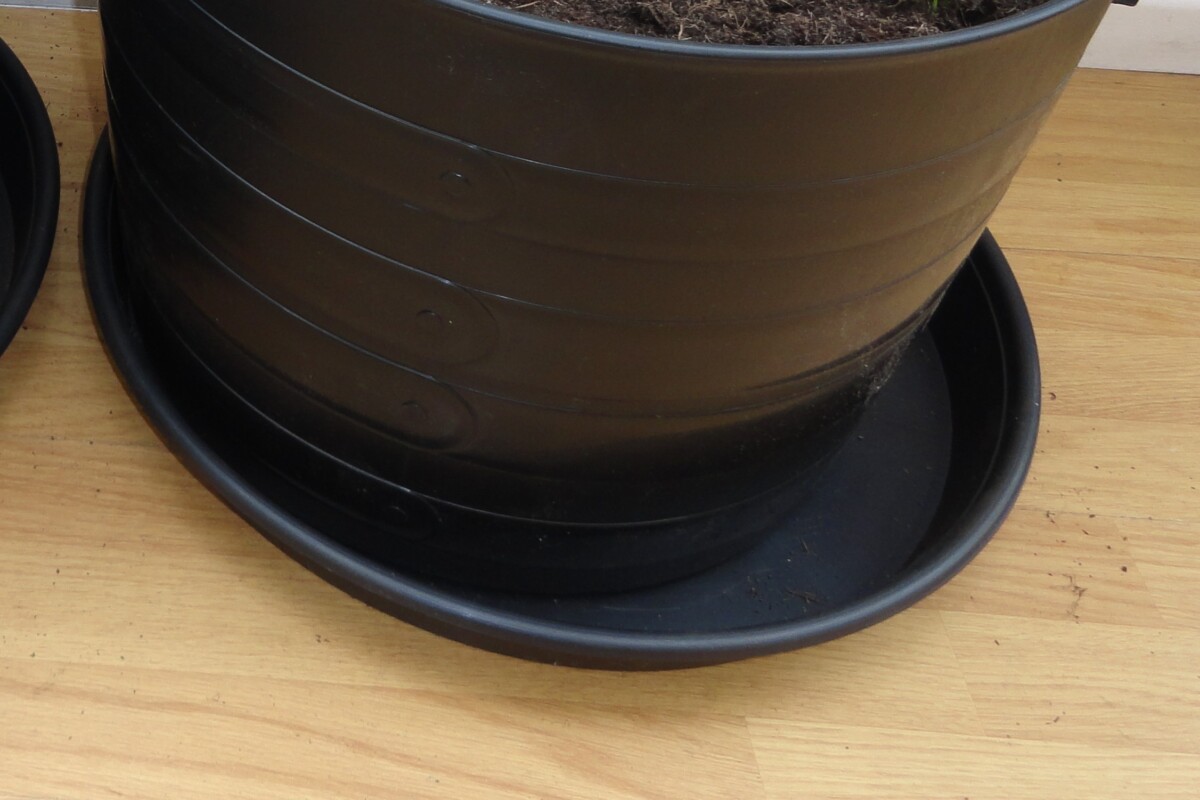
I know we’ve heard it a million times. XYZ plant hates wet roots. Don’t let ABC plant sit in water. Generally, this is true, especially where houseplants are concerned. But houseplants aren’t baking in full sun outside all day either. When growing directly in the soil, it’s a good idea to refrain from watering too often, as it encourages the plant to grow its roots deep, making them drought resistant.
We aren’t growing directly in the soil with containers, and our plant’s root depth is limited to the size of the pot. Not to mention, we have less soil to help hold in moisture, so our potted plants dry out much faster baking in the sun. This is why checking on hanging plants at least twice a day in high summer is advisable. All it takes is a day or two of extreme temperatures for those pretty flowers to die.
We’re going to break all the rules and give potted plants continuous access to water.
Not only will this ensure your plants will be fine on those crazy hot days, but it will make your life easier, as you won’t have to water as frequently.
Instead of a tiny little drip tray or saucer under your container, we will use a pan with a lip at least 3”-5” high. Before placing the container in the pan, lay a couple of sticks on the bottom to lift the container. Now set the container on top of these, and water can be absorbed through the drainage holes.
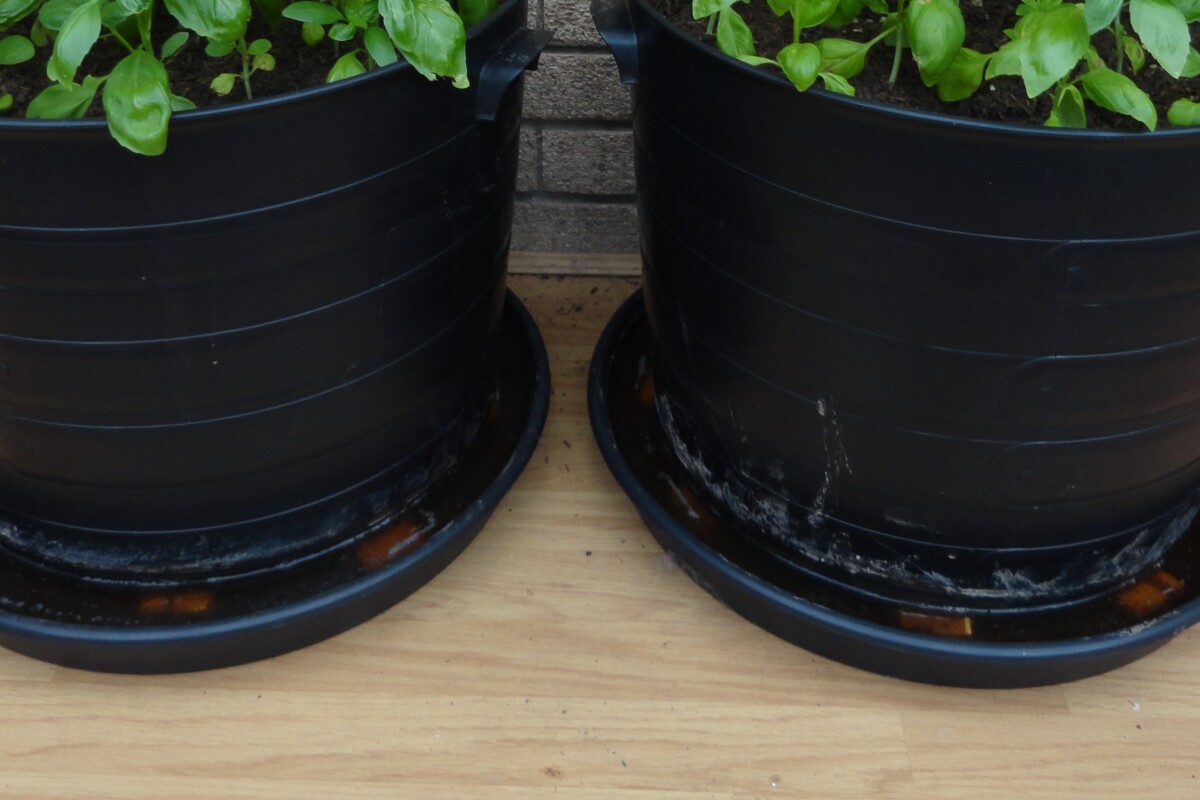
Fill the pan up to the lip with water. The plant will absorb what it needs when it needs it. All you have to do is refill the water as it gets low. Don’t let it get below the bottom of the pot. As the season progresses, roots will grow out of the drainage holes, so it’s important they don’t dry out.
Because we’re not potting up, you will need to water seeds and seedlings from above until their roots grow deep enough to reach the water from below. Start by filling the pan and watering from above as soon as the seedlings begin to wilt. You’ll know their roots have reached the water in the pan when you no longer have wilted seedlings. It will happen sooner than you think.
Fertilizing is easier this way, as you can add it directly to the pan of water, where it will go straight to the roots where it’s needed.
Fertilize, Fertilize, Fertilize
Speaking of fertilizer, container-grown vegetables need to be fertilized often. Remember, a soil-based garden has plenty of nutrients locked in the ground. Your container garden only has what you give it. Nutrients wash out of the soil in containers if you get a few days of steady rain.
To ensure a good yield and plants have all the nutrients needed, you’ll need to fertilize more frequently than in a conventional garden. The best way I’ve found to do this is to fertilize at ¼ or ½ strength every time you add water to the pan, using a natural liquid fertilizer. I don’t recommend synthetic fertilizers when container gardening. The salts build up, making fertilizer burn more likely.
Don’t forget to consider the nutrient needs of each plant you’re growing.
Fruiting plants, like tomatoes and eggplant, will need more phosphorous once they begin to set flowers. Too much nitrogen at this point, and you’ll get more leafy growth rather than more tasty tomatoes.
Ask For Help From a Fun Guy
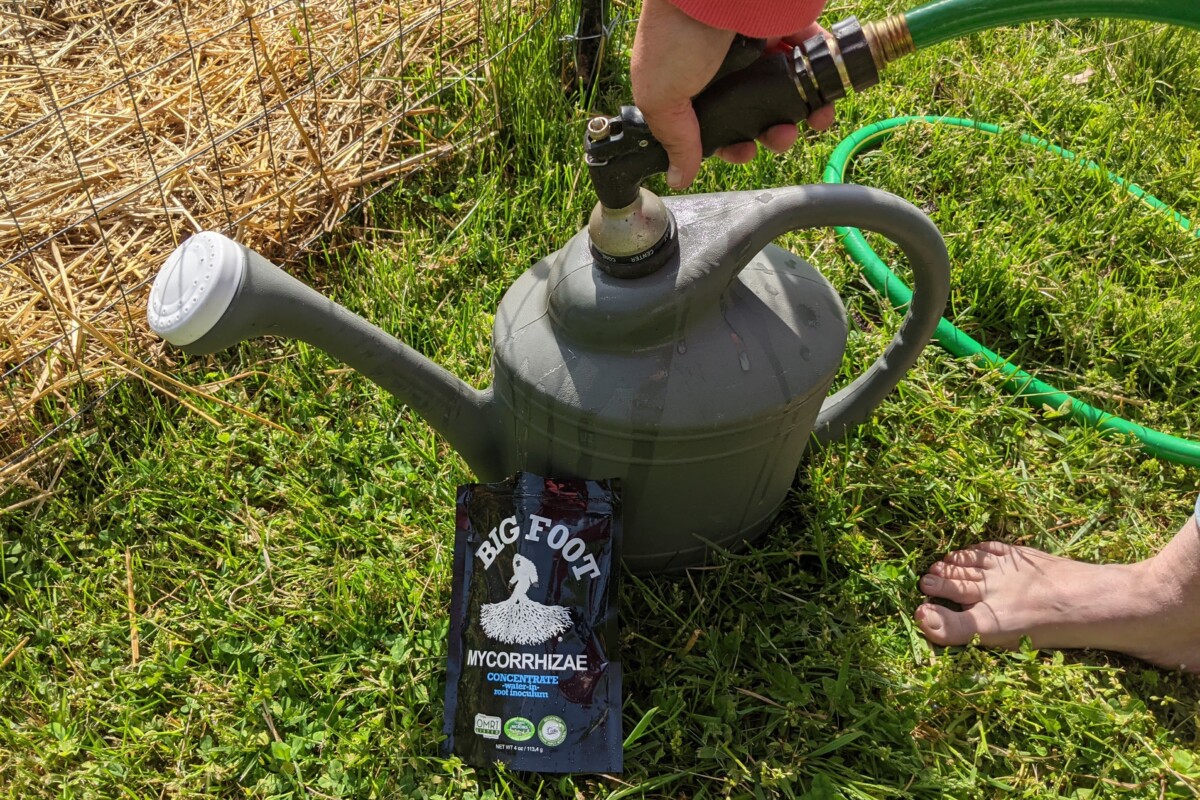
There is an entire universe of microorganisms living in the soil. Many are important in developing healthy and extensive root systems for plants. (Are we all on the same page yet, about the importance of healthy roots in container gardens?) These fungi and bacteria increase water retention and break down nutrients in the soil, making them readily available for plants. They can even help deter certain kinds of pests. Unfortunately, when we use potting soil for container gardens, we lose out on the helpful microbes that occur naturally in living soil.
But you can easily fix that with mycorrhiza.
Mycorrhiza is the helpful fungi that plants use to create vast root systems. (You can read all about it here.)
If you’re using potting soil, you can add mycorrhiza to your soil in several ways. Inoculate the roots as you transplant seedlings, or inoculate the soil with mycorrhiza mixed in water. I started using Fox Farm’s Happy Frog soil which comes inoculated with mycorrhiza. I’ve had great success with it, as well as a few surprise mushrooms growing in my containers.
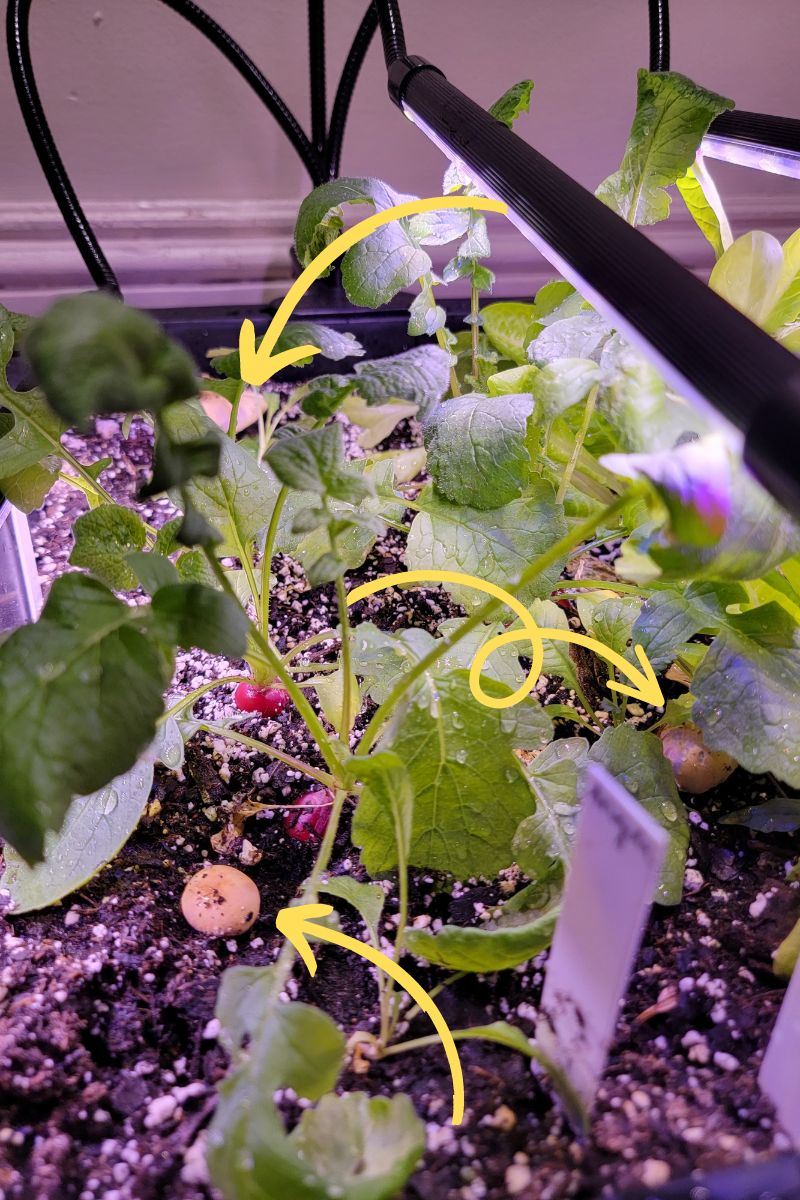
Don’t Make Your Plant Waste Energy
Remember, container gardening means limited access to the resources your plant needs to make energy – water, nutrients and soil. Containered-plants don’t bounce back as easily as soil-grown plants, so it’s important to make sure they don’t have to work harder to yield produce.
Always keep your water pan filled. If a potted plant dries out too much, it can affect overall growth and fruit production. Likewise, make sure your plant has all the nutrients it needs to grow. Test the soil and fertilize frequently.
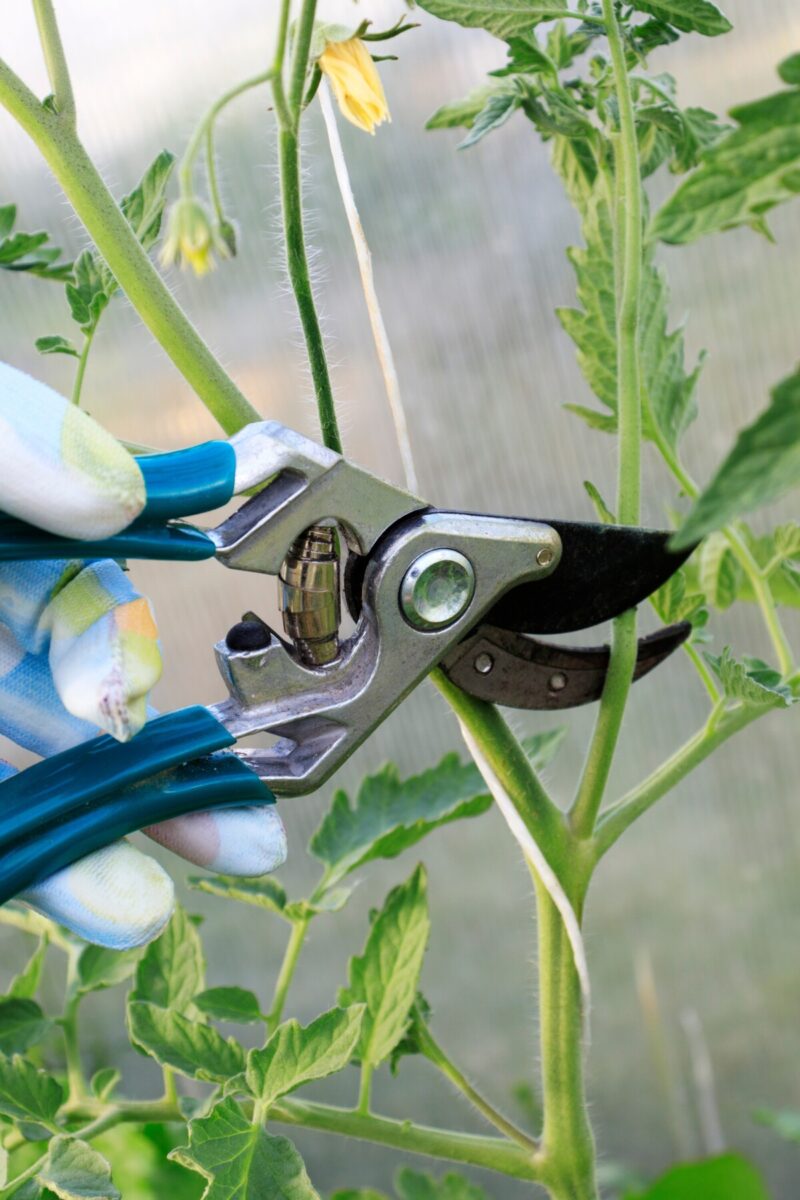
Pruning is especially important with potted plants. Pruning will keep your container garden in check and encourage fruit production. Pruning helps your plant put its energy where needed, not on growing insanely large.
Deal with pests right away. The nice thing about container gardens is pest control is pretty easy. You tend to notice pests sooner before they become a problem and can pick them off or spray your plant with insecticidal soap.
We’ve covered a lot of ground in this article, and it’s a lot to take in. I suggest reading through it twice before implementing these changes in your container garden. If you’re still on the fence about whether or not growing plants in containers can lead to massive yields, I’d like to direct your attention to a basil-growing master who can hopefully convince you otherwise.
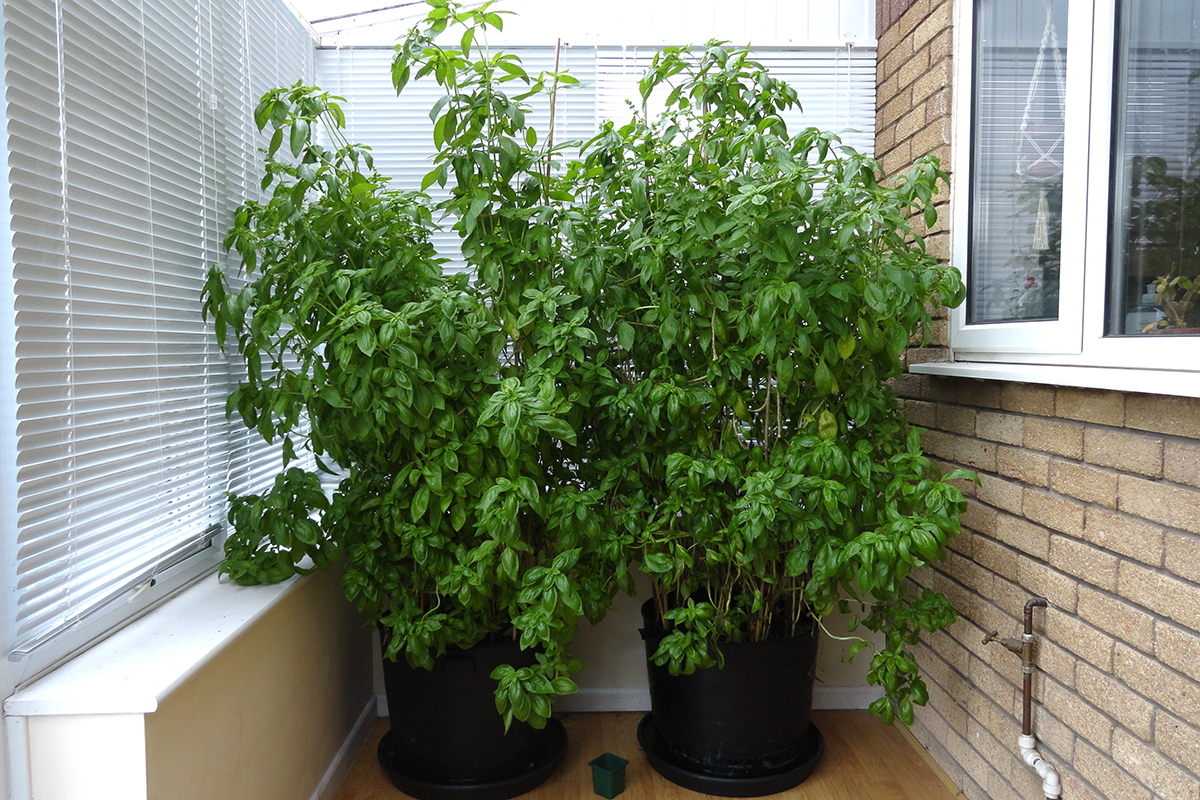

Get the famous Rural Sprout newsletter delivered to your inbox.
Join the 50,000+ gardeners who get timely gardening tutorials, tips and tasks delivered direct to their inbox.

